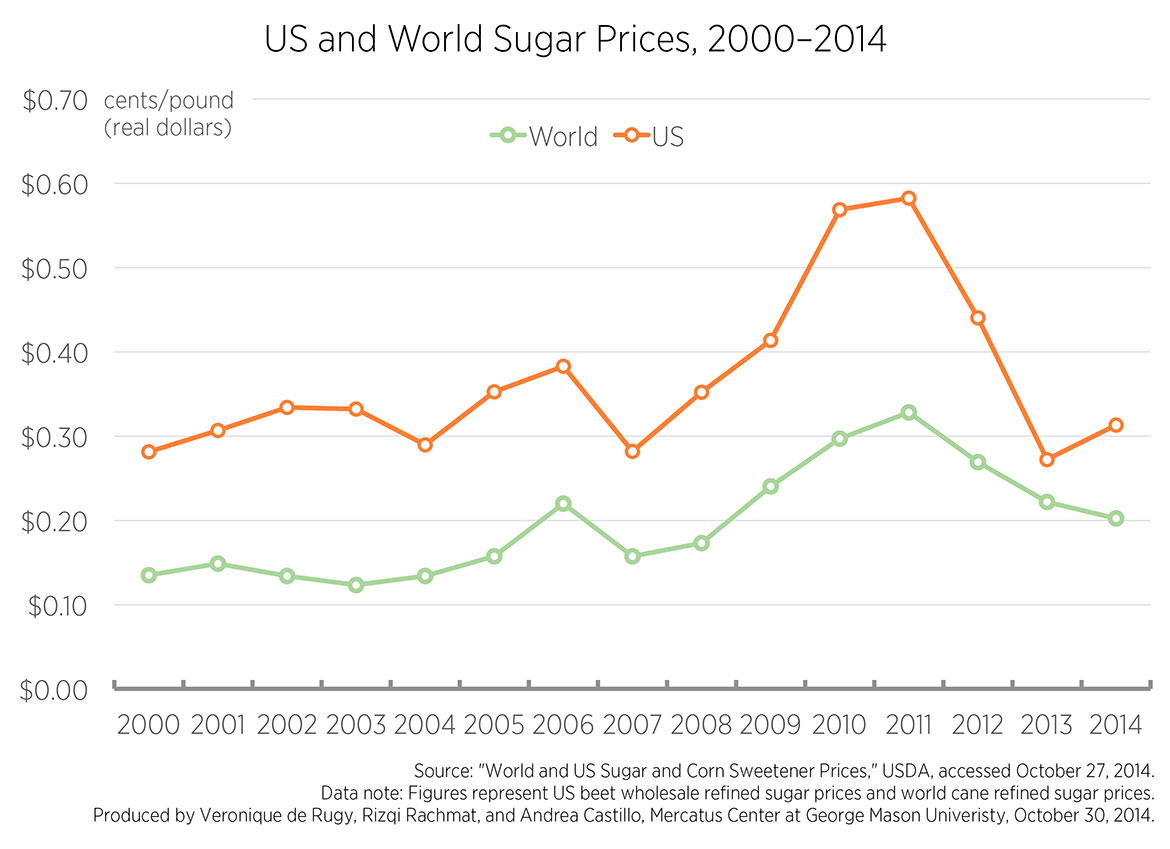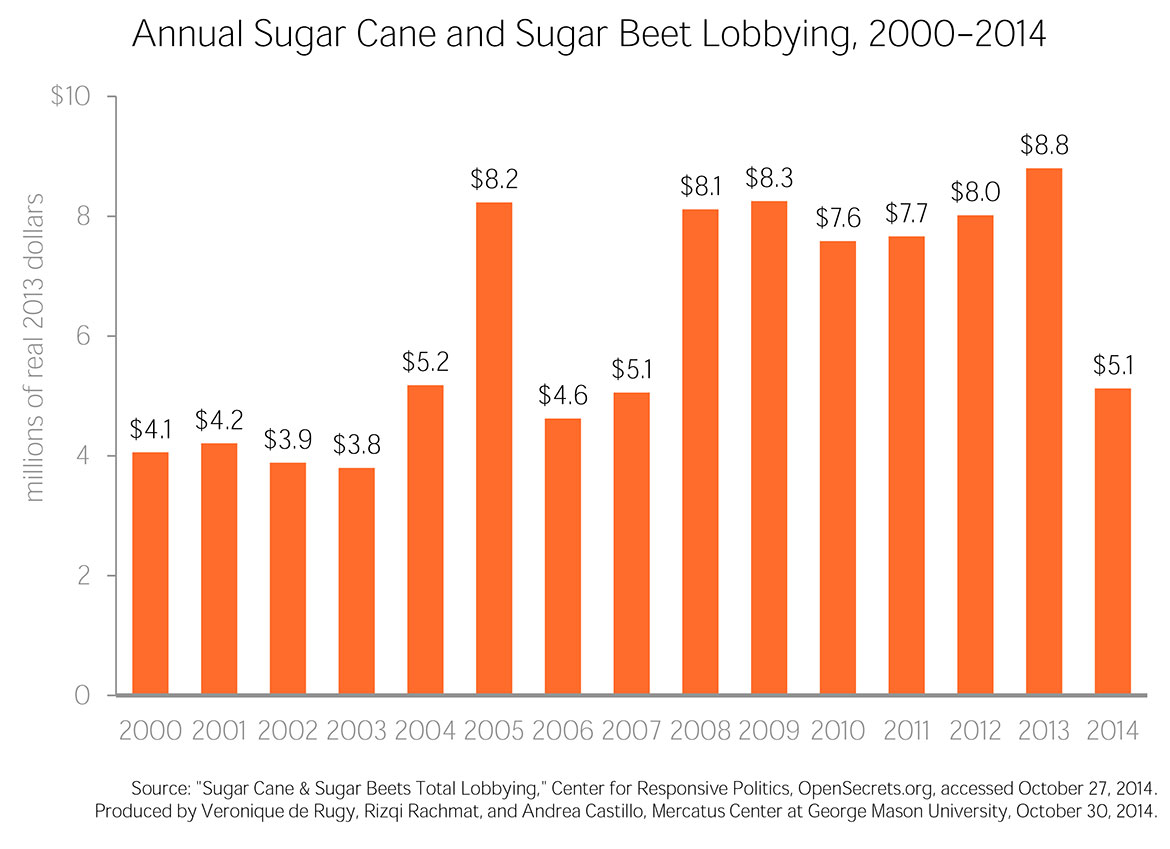- | Corporate Welfare Corporate Welfare
- | Data Visualizations Data Visualizations
- |
Special Interest Sugar Policies Raise Costs of Halloween Fun
This week’s charts use data from the US Department of Agriculture (USDA) and the Center for Responsive Politics to display global and US sugar prices, annual lobbying spending by the sugar industry, and government-planned market segmentation of the domestic sugar industry through the USDA’s Domestic Sugar Program. The charts show that Big Sugar is a formidable Halloween haunt: their lobbying efforts pay handsomely in the form of government-driven market segmentation and artificially high sugar prices.
Special interest tricks leave the rest of us with far fewer treats on Halloween night. If your candy haul looks a little lighter than it did last year, federal subsidies and privileges to domestic sugar corporations may be partly to blame. For years, the federal government has protected the US sugar industry by shielding producers against foreign competitors, imposing US import quotas, and funding a no-recourse loan program for chosen firms. The result is truly frightening: sugar companies heavily lobby Congress for protections that push US sugar prices far above the global average.
This week’s charts use data from the US Department of Agriculture (USDA) and the Center for Responsive Politics to display global and US sugar prices, annual lobbying spending by the sugar industry, and government-planned market segmentation of the domestic sugar industry through the USDA’s Domestic Sugar Program. The charts show that Big Sugar is a formidable Halloween haunt: their lobbying efforts pay handsomely in the form of government-driven market segmentation and artificially high sugar prices.
The first chart displays data from the USDA’s Sugar and Sweetener Yearbook Tables to compare US refined beet sugar prices to world refined sugar prices from 2000 to 2014 in real 2013 dollars. US sugar prices have remained well above world prices throughout the entire period. Technological or market failures do not explain the price discrepancy, given the high productivity and human capital available in the US economy. Rather, the price discrepancy suggests that some legislative barrier to entry protects domestic producers.
The second chart uses data from the Center for Responsive Politics to display known sugar cane and sugar beet lobbying spending from 2000 to October of 2014 in real 2013 dollars. The chart suggests that domestic sugar producers are willing to spend millions of dollars each year to secure industry aims in Washington. The sugar lobby spent an average of $6 million annually attempting to influence Congress members over the past 14 years. The Center for Responsive Politics reports that sugar interests spent $5.1 million so far on lobbying from January to October of 2014.
The third chart uses data from a USDA Sugar Program update to display sugar market allotments and chosen firms for FY 2015. A USDA program fact sheet clinically explains that the program will “estimate the domestic human consumption of sugar and establish marketing allotments for sugar sold for human consumption that has been processed from sugarcane, sugar beets, or in-process beet sugar.” What this means is that the USDA actually tells sugar producers how much sugar can be domestically produced each year and how much of that total each firm is allowed to produce. Firms that produce more than their market allotment cannot legally sell the excess sugar to the public. This all serves to limit competition and keep sugar prices high for American consumers.
A look at the Center for Responsive Politics’s website, which breaks down the individual contributors, reveals that the sugar producers that spent the most money lobbying Congress secured high market allotments for FY 2015.
These charts show that serious problems plague the domestic sugar industry. Policymakers and special interests collude to pass policies that intentionally keep US sugar prices well above world prices. Government intervention in the sugar industry is so unchecked that the USDA actually plans and segments sugar production to protect a handful of producers at the expense of everyone else. While the high cost of our Halloween treats may be frightening enough, the fact that our candy corn is kept intentionally expensive by Soviet-style planning boards in Washington may be the season’s real scare.




